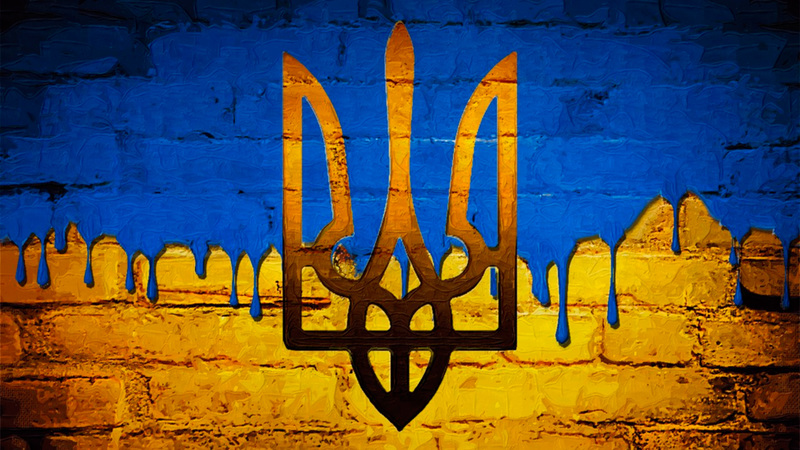The fight for freedom: What America and Ukraine have in common

In June 1861, on a hill above the Dnieper River in Ukraine, an American, Ira Aldridge, the first 19th century black actor to play roles “reserved for whites, stood alone, weeping over the grave of a kindred spirit,” writes Dick Russell in his 1998 book, “Black Genius.”
That kindred spirit was the poet-laureate of Ukraine, Taras Shevchenko, who died in 1861 at the age of 47. For 37 of those years, Shevchenko was either a serf or in penal exile ordered by the czar of Russia for his vision of a free Ukraine, as expressed in his poetry and artistry.
According to Russell, “these two men, who could not speak each other’s language, quickly became close friends. They met regularly, sharing memories, comparing … slavery in America … with serfdom in Ukraine and Russia.
Shevchenko’s meetings with Aldridge in St. Petersburg, Russia, were made possible by Shevchenko’s benefactor and patron of the arts, Count Theodor Tolstoy, proving that there are, or at least were, Russians who respected Ukraine and Ukrainians.
During those meetings, Count Tolstoy’s 15-year-old daughter served as interpreter. It was then that Shevchenko drew his famous portrait of Aldridge. It is said that during breaks, the two men would entertain each other with songs. Aldridge would sing Negro spirituals; Shevchenko would sing Ukrainian folk songs.
How ironic it was that in 1863, two years after Shevchenko’s death and the very year that Abraham Lincoln issued the Emancipation Proclamation, the czars of Russia began intensifying their attacks on Ukraine, by way of the “Valuyev Circular.” They did it again in 1876, via the EMS Ukaze. Both edicts degraded Ukraine’s language and culture to the point that Ukrainian language books were burned and Ukrainian teachers were imprisoned.
As we look at Ukraine today, we see Ukrainians fighting and dying to keep the freedoms they earned just over two decades ago, when the Soviet Union imploded overnight.
Ukrainians do not want to return to the days of the czar, or to the days of Josef Stalin. They do not want a repeat of the 1932-33 Holodomor, when Stalin stole Ukraine’s harvest, closed Ukraine’s borders and starved to death 7 million free Ukrainian farmers, including 3 million women and children.
Independent polls conducted in areas of Eastern Ukraine that are not controlled by Russia make clear that 94 percent of the people there do not share Vladimir Putin’s distorted vision of a Russian-controlled country.
The story of the Aldridge-Shevchenko friendship helps puts into perspective what freedom is, and why Ukraine is important to America. Perhaps the best explanation comes from Aldridge himself. According to Russell, when Aldridge was heading back to England, he wrote to Shevchenko, “In my person, you have shown your sympathy and love for my oppressed people.”
George Sajewych, the retired TV commentator for Voice of America, wrote in program notes for the 1986 Kennedy Center concert, An American Tribute to Taras Shevchenko, “Above all else, Taras Shevchenko stands for liberty. More than any other European poet, he exposed and condemned the inhumanity of slavery and serfdom … “he came to the defense of oppressed peoples everywhere.”
According to Sajewych, “Shevchenko was inspired by the American Revolution and asked on behalf of his Ukrainian people: ‘When shall we, at least, welcome the Washington we’ve waited for, with his new and righteous law?”
Another Ukrainian-American, Demetrius Corbett, writing in the Spring 1964 “Journal of Negro Education,” in an article titled “Taras Shevchenko and Ira Aldridge,” quoted from several Shevchenko poems, including Shevchenko’s last will and testament. Translated by Peter Fedynsky as: “When I die, then bury me atop a mound … in my beloved Ukraine …Bury me, rise up and break your chains, then sprinkle liberty with hostile wicked blood.”
High on that ancient mound … that was where, in 1861, Ira Aldridge stood alone, “weeping over the grave of a kindred spirit.” It was Aldridge’s first of three journeys across Ukraine, including to the cities now overrun by Russian-inspired invaders.
Ira Aldridge is buried in Lodz, Poland, where he died during one of his engagements. Taras Shevchenko died in St. Petersburg, Russia, but he was reburied in Ukraine.
There is a theater that bears Ira Alridge’s name at Howard University in Washington. There is also a monument to Taras Shevchenko in Washington, on P Street between 22nd and 23rd Streets. It was unveiled in 1964 by former President Dwight Eisenhower. The unveiling, attended by some 100,000 people, took place just a year after Dr. Martin Luther King’s “I have a Dream” speech at the Lincoln Memorial.
Ira Aldridge and Taras Shevchenko also shared a dream … that one day their peoples would live in freedom. As this is being written, Ukraine is calling for international peacekeepers — a stark admission, says the Washington Post, that Ukraine can no longer repel Putin’s invaders.
America, if there ever was a time to help Ukraine, it is now.
Andrij Bilyk, Ed Skibicki












Comments